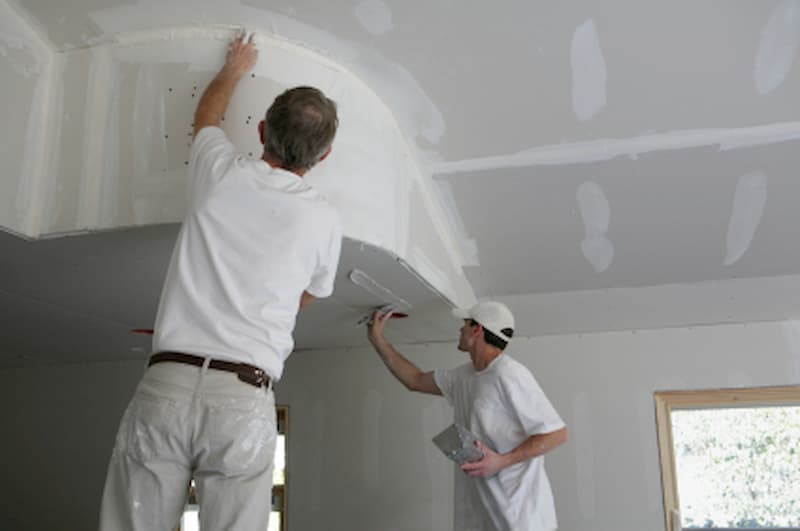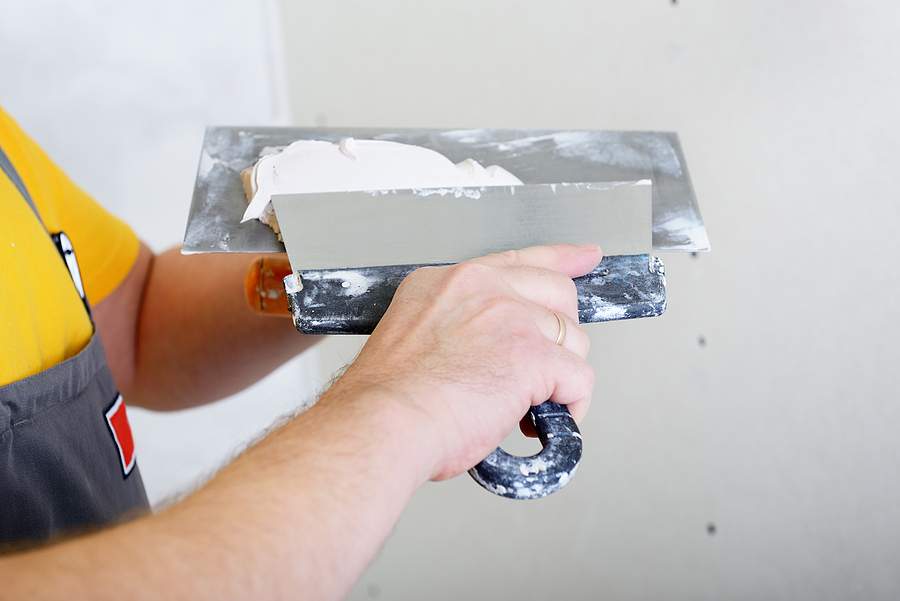A Comprehensive Guide to Mastering Drywall Repair Work and Installment
This guide uses a complete exploration of drywall repair work and installation, accommodating both beginners and seasoned experts. It details necessary tools, strategies for patching and hanging sheets, and the critical ending up procedures. Drywall Installation Ogden Utah. By understanding typical challenges, individuals can accomplish polished results. Grasping these abilities not only boosts one's home but additionally builds self-confidence in do it yourself endeavors. What fundamental suggestions will ensure a successful job throughout?
Essential Devices for Drywall Repair Service and Setup
When starting on drywall repair work and installment, a few necessary tools can significantly boost the efficiency and top quality of the job. A drywall knife, generally offered in various dimensions, is important for applying joint compound and smoothing seams. A taping knife is additionally necessary for feathering sides and ensuring a smooth surface. Furthermore, a drywall saw or utility knife allows for precise cutting of drywall sheets to fit any area.

Step-by-Step Overview to Patching Holes
Patching holes in drywall is a simple procedure that can recover the wall's look and integrity. To start, the location around the opening should be cleansed and any kind of loose particles removed. For tiny openings, a straightforward spackle or joint compound can be used with a putty blade. Bigger holes may call for a patch; an item of drywall can be reduced to fit the hole, protected with adhesive or screws, and afterwards taped around the sides. Once the spot is in place, joint substance is used over the patch and feathered out to blend with the bordering wall. After the compound dries out, fining sand is essential to attain a smooth coating. Lastly, the repaired location can be topped and repainted to match the rest of the wall. This method guarantees a smooth repair, boosting the general appearance of the drywall and keeping its structural stability.
Methods for Hanging Drywall Sheets
After efficiently fixing holes in drywall, the following step involves hanging new drywall sheets to produce a seamless surface. To attain this, one must begin by measuring the wall surface space accurately and reducing the drywall sheets to fit. It is essential to hang the sheets horizontally for better architectural integrity, beginning with the top and functioning downwards.
Making use of a drywall lift can simplify the procedure, especially for ceiling setups. As soon as positioned, protecting the sheets with drywall screws at periods of concerning 12 inches along the sides and 16 inches in the area is essential. This assures a solid hold and decreases the risk of drooping. For corners, the sheets ought to be reduced to fit well, permitting cleaner seams. It is suggested to surprise the joints between sheets to reinforce the general framework, developing a much more resilient finish all set for the following stage in the drywall installment process.
Ending Up Touches: Taping and Mudding
Completing the drywall installation entails the vital actions of mudding and taping, which guarantee a sleek and smooth coating. Taping needs the application of joint tape over the seams between drywall sheets. drywall contractor. This tape can be either paper or fiberglass mesh, with each type offering unique benefits. After taping, the next action is mudding, where joint compound, or "mud," is related to cover the tape and load any kind of blemishes
Utilizing a drywall blade, the compound needs to be spread evenly, ensuring a feathered side to reduce visible changes. Several find more info layers are typically necessary, with sanding in between each layer to achieve a seamless surface area. Cautious focus during this process is vital, as it significantly influences the final look of the wall surface. With the ideal technique and patience, completion outcome will certainly be a flawless structure all set for paint or completing touches.
Common Blunders to Stay Clear Of in Drywall Projects

An additional common error is not enabling adequate drying out time between layers, which can trap wetness and compromise the coating. Moreover, overlooking to feather the sides properly can develop visible lines and flaws. Finally, missing sanding or making use of inappropriate methods may leave rough areas. By recognizing these pitfalls, people can significantly enhance the quality of their drywall tasks and achieve a professional-looking their explanation surface.
Often Asked Concerns
Can I Fix Drywall Without Specialist Help?
Yes, one can repair drywall without professional help. With the right tools, materials, and guidance, individuals can effectively handle small repair services. Nonetheless, significant damage might need specialist expertise for ideal outcomes and longevity.
Exactly How Lengthy Does Drywall Compound Require To Dry?
Drywall compound typically takes in between 24 to 48 hours to completely dry totally, depending on factors such as moisture and temperature level. Thinner layers may dry out faster, while thicker applications require even more time for suitable results.
What's the Best Sort Of Paint for Drywall?
The very best kind of paint for drywall is typically a water-based latex paint. It provides outstanding insurance coverage, toughness, and simplicity of application, making it site web perfect for interior walls while permitting very easy clean-up with soap and water.

Exactly how Do I Protect Against Mold on Drywall?
To avoid mold and mildew on drywall, assurance appropriate ventilation, control moisture degrees, utilize mold-resistant products, and quickly address any kind of leaks. Routine inspections and prompt remediation of water damage are additionally crucial for lasting prevention.
Is Drywall Recyclable After Elimination?
Drywall is recyclable after elimination, offered it is cost-free from impurities like mold and mildew, paint, or various other unsafe materials. Recycling centers can refine it right into brand-new products, advertising sustainability and minimizing landfill waste in building and construction.
When starting on drywall repair and installation, a few important tools can considerably improve the effectiveness and top quality of the work. After effectively repairing holes in drywall, the next step involves hanging brand-new drywall sheets to develop a smooth surface. Completing the drywall installation involves the essential steps of mudding and taping, which guarantee a sleek and smooth surface. Attaining a refined coating in drywall tasks can be difficult, and a number of usual blunders can undermine the high quality of the work. Yes, one can fix drywall without specialist assistance.